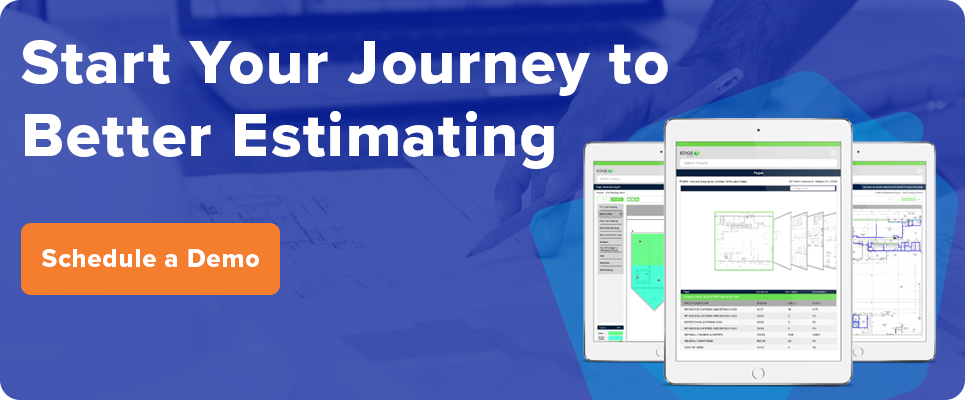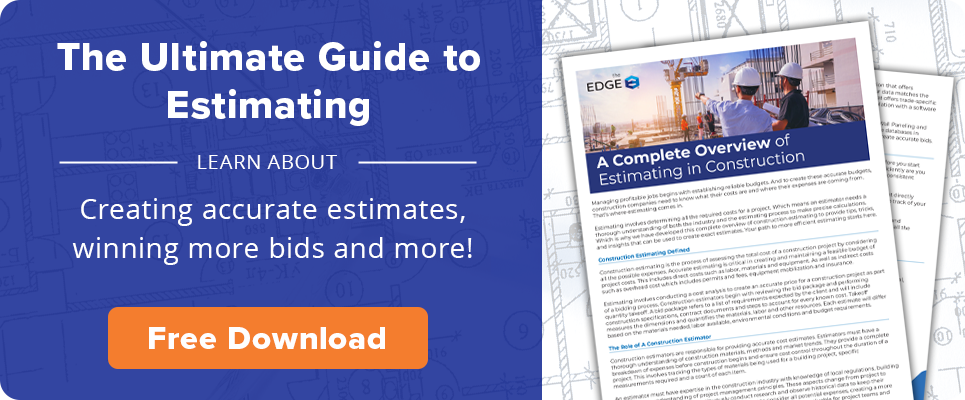
An estimating template is basically your blueprint for creating rock-solid cost estimates without starting from scratch every single time. Think of it as your go-to framework that helps you stay organized and consistent across all your construction projects.
Professional estimators love these templates because they can plug in blueprint information, material quantities and labor calculations without reinventing the wheel for each new job.
Here’s why construction contractors swear by these cost estimation tools:
- Speed up your bidding process (and who doesn’t want that?)
- Hit your numbers more accurately
- Keep everything consistent across multiple bids

When you know how to use estimate templates effectively, you’ll see a real difference in how smoothly your construction business runs – and your project profitability will thank you for it.
Key Takeaways
- Estimating templates provide construction estimators with a standardized framework for building comprehensive estimates for commercial and government construction projects.
- Cost estimation templates help general contractors and subcontractors avoid errors and build consistent estimates and, ultimately, improve the quality of their project bids.
- Construction estimating software can automate complex calculations, helping construction professionals create more accurate estimates, with many platforms offering built-in template libraries for various trade specialties and integrated takeoff software capabilities.
How Do You Use an Estimating template?
Construction estimators who know what they’re doing follow a systematic approach that covers all the bases. It’s not rocket science, but there’s definitely a method to the madness.
Professional contractors stick to these key steps to maximize their cost estimation accuracy and win more projects.
Step 1: Pick and Customize Your Template
Construction professionals choose templates based on what they’re actually building – not all projects are created equal. A good estimation template should cover all your essential cost components:
- Direct labor costs and wage calculations
- Material costs and supplier pricing
- Equipment rental and machinery expenses
- Overhead costs and administrative fees
- Profit margin projections and markup calculations
- Client details and project specifications
- Project timeline and completion dates
- Detailed scope of work documentation and deliverables
- Quantity takeoffs and unit measurements
- Unit costs and pricing variables
Step 2: Fill It Out With Real Project Data
This is where the rubber meets the road. Construction estimators pull information from:
- Architectural drawings
- Technical specifications
- Site surveys
You’ll need to input material quantities, supplier costs, labor hours and all those other project-critical variables that actually determine what this thing’s going to cost.
The good news? Modern takeoff software can pull quantities straight from digital plans, which saves you tons of time.
Step 3: Double-Check Everything
Professional estimators always, always review their work. You want to make sure your calculations are spot-on, and you haven’t missed anything important.
Quality control means cross-checking material prices, validating labor estimates and making adjustments before you send out your bid proposals.
Here’s a pro tip: Keep improving your templates by analyzing how your estimates performed after project completion. This helps you fine-tune your process and stay competitive.
Why are Construction Estimating Templates Important?
Construction estimating templates create a standardized way to generate accurate cost estimates no matter what type of project you’re working on or who’s on your team.
When you use template-based estimation, you’re setting your construction company up for better project outcomes and a real competitive edge.
They Make Your Estimates Way More Accurate
Standardized formats reduce the risk of missing critical elements, cost overruns and those calculation errors that can kill your profit margins.
When your templates are consistent, you get more accurate estimates, leading to benefits like:
- Better project planning
- Tighter budget management
- Happier clients
Construction professionals who use solid templates experience fewer change orders, fewer project delays and better profit margins compared to contractors who wing it. Well-structured templates make sure your scope of work is crystal clear and priced right from day one.
Building Estimates Faster
Pre-built template structures streamline your estimation process by giving you a proven framework instead of starting with a blank page every time.
This means your estimators can focus on the project-specific details instead of building everything from scratch. Add takeoff software to the mix, and you’re looking at some serious time savings through automated quantity calculations.
The best part? You can save and tweak these templates for future projects with similar layouts and construction methods. This cuts estimation time even more when you’re juggling multiple projects.
Comparing Project Estimates
Consistent formats make it easy for construction managers to compare different project proposals and bids using the same metrics across the board.
Template-based comparisons help you figure out which projects are actually worth your time and make smart decisions based on your historical project data.
Easier Training and Review Processes
New construction team members can quickly learn your estimation procedures by following your structured templates.
Standardized approaches cut down the learning curve and ensure team consistency while making it easy to spot key information during estimate reviews.
How Can Estimating Templates Simplify the Bidding Process?
The construction bidding process involves juggling complex cost calculations, competitive analysis and tight timelines – especially when you’re dealing with large-scale projects or multiple bids at once.
Professional estimation templates simplify these challenges through systematic approaches that actually work.
Managing Multiple Bids Simultaneously
Template-based estimation lets construction contractors generate competitive bids more efficiently because you’ve got ready-made frameworks for all your cost calculations.
Streamlined bidding processes are a lifesaver when you’re working under tight deadlines or submitting multiple proposals at once. Templates ensure every bid proposal looks professional and includes all the necessary scope of work details.
Construction companies with solid template libraries can bid on more projects while maintaining quality and competitive pricing.
Building Consistent Project Bids
Standardized templates ensure every bid follows the same format, making it easier for project owners to compare proposals – which is exactly what you want.
Template consistency helps general contractors maintain professional standards across all submissions and ensures every bid proposal presents a complete scope of work.
Minimizing Estimation Errors
Well-designed templates guide construction estimators through each step of the cost calculation process, reducing errors and giving you comprehensive checklists to make sure you’ve covered everything.
Error reduction built into professional templates helps contractors avoid costly mistakes, scope omissions and pricing errors that can hurt profitability and client relationships.
Justifying Project Costs
Template-based estimation makes it easy to track and justify material costs, labor expenses and overhead allocations in your bids.
Transparent cost breakdowns build client trust and are often the key to winning construction projects by showing project owners exactly where their money’s going.
How Does Construction Estimating Software Help?
Construction estimating software takes template-based estimation to the next level through:
- Automated calculations
- Integrated databases
- Cloud-based collaboration
- Built-in takeoff software functionality
Digital platforms automate many aspects of the construction estimating process, including complex calculations, data entry and template management.

Construction estimating software like The EDGE® enables contractors to effectively assess and perfect their estimation templates through:
- Data analytics
- Performance tracking
- Continuous improvement capabilities
The EDGE offers built-in estimating templates designed for various construction specialties and project types, providing immediate value for construction professionals seeking competitive advantages.
Ready to see what comprehensive estimating templates can do for your business? Contact us today to explore The EDGE construction estimating software in action!





